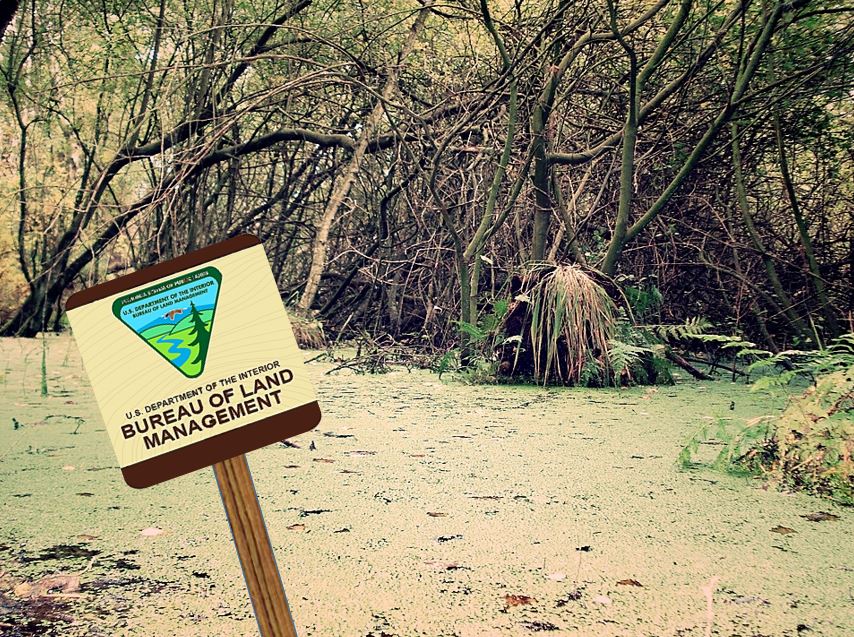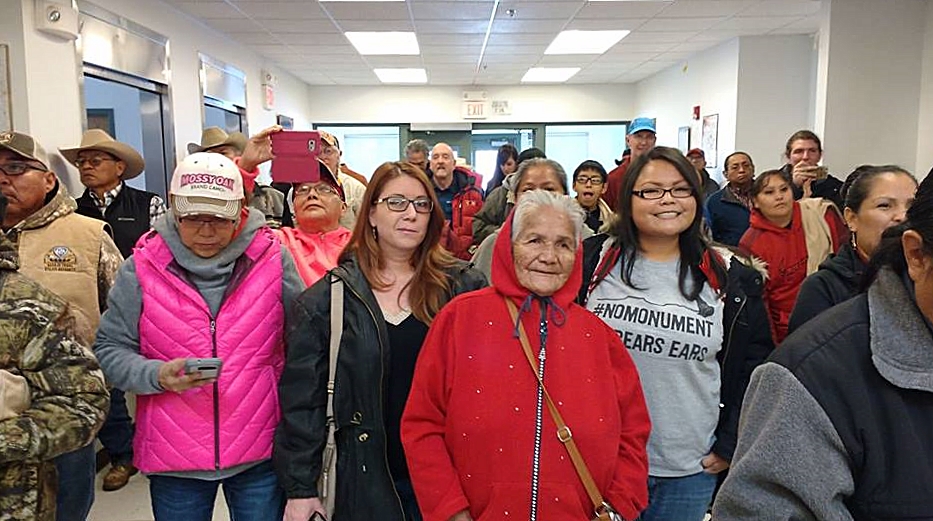Unfortunately for Americans in the West, where the BLM asserts control over staggering amounts of land and resources, the federal agency and many of its employees are more connected with activists representing green special interests than they are with the people whose lives and livelihoods are impacted by its job-killing Obama-era policies.
by Marjorie Haun
This is Part I in a series exposing deeply-embedded entanglements between federal land management agencies and agenda-driven environmentalist groups. This series will reveal a deep and sordid swamp that must be drained, and will likely require many years and a lot of sunlight to be properly disinfected.
Despite the fact that in the early days of his administration President Trump replaced Obama’s Interior Secretary, big rec executive Sally Jewell, with western outdoorsman and former Navy Seal, Ryan Zinke, the culture, process, bad policy, and special interest baggage of past years continue to fester within the Bureau of Land Management (BLM) and its sister agencies.
On May 14, a Western Colorado newspaper reported that four counties were proceeding with a lawsuit against the federal government over a BLM Resource Management Plan (RMP) that goes back to 2015. If the RMP is implemented, local ranchers will be devastated by a potential 50 percent cut in grazing allotments, and domestic energy producers will virtually be locked out of some regions of Western Colorado. The report reads:
Garfield County commissioners on Monday unanimously agreed to lead the litigation effort, which also will involve Rio Blanco, Moffat and Jackson counties. It follows a recently reached agreement under which the federal government will pay Garfield County $25,000 for legal fees it incurred in filing a lawsuit to get the government to comply with its obligation to provide information under the Freedom of Information Act related to decisions made about the bird.
The BLM amended resource management plans in Colorado and other states in 2015 to better protect the greater sage-grouse, in the process convincing the U.S. Fish and Wildlife Service to keep the species off the federal endangered species list. Local counties worry about the impacts on human activities that the protections will have where the bird is found in Colorado, in the northwest part of the state.
Garfield County is particularly concerned because of the potential for hindering oil and gas development. County commissioners fear that more than $200 million in potential tax revenues for the county are at risk.
County Commissioner Tom Jankovsky noted Monday that the county has had its own peer-reviewed research done, and concluded that the county is home to about 74,000 acres of priority habitat for the bird, about a third the amount the BLM says is the case in the maps it is relying on.
He said the county met with the BLM and provided comments, “and yet they were not heard.”
The complaints from the four agricultural/energy-producing counties mentioned are not just about the RMP itself or its possible impact, but about the dishonest way the Obama-era BLM went about formulating it. The collusion between the federal agency and environmentalist groups, some of them with extreme views on land and resource management, poses some troublesome and lingering question for the counties most impacted by the RMP, and the commissioners in Garfield, Rio Blanco, Moffat and Jackson counties believe that the influence of environmentalist NGO’s has essentially shut them out of the conversation. The report details Garfield County’s attempt to get answers:
The county then used the Freedom of Information Act to try to determine how the BLM’s final decision and environmental impact statement could contain such radical changes from what had earlier been proposed, and the county found some disturbing procedural issues, Jankovsky said.
Last summer, Kent Holsinger, who represented the county in the matter, said the records obtained showed numerous meetings and interactions between the Interior Department and conservation groups at the time those changes were made. An Interior Department spokesperson responded at the time that its sage-grouse plans in western states protect habitat while providing for sustainable development, follow the best available science, and were developed collaboratively with state and local partners, including counties.
Jankovsky said Monday, “I think the only way for us to open this back up in front of the new administration is for us to move forward with a lawsuit.”
It is clear that these local leaders understand they are confronting procedures and policies from a radically different administration than that which currently guides the BLM. Despite new leadership, RMP’s are not simply nullified, nevertheless it appears that Garfield County and its cohorts are putting a measure of faith in the current Interior Department chief. But sage grouse ‘protections’ are not the only baggage holding back the BLM from executing its mission of resource development and multiple use on public lands. The BLM’s incestuous relationships with environmentalist groups which continue to wield influence over many of the federal agency’s local offices, are perpetuating an Obama-era ethos of diminishing access and restricted use on public lands throughout the West.
Back in 2009 the New York Times reported:
Bureau of Land Management employees appeared to be “less than objective” and created the potential for illegal behavior when coordinating with environmental groups over the National Landscape Conservation System, the Interior inspector general has found.
The Interior IG investigated the interaction between federal employees and nongovernmental organizations (NGOs) after receiving a complaint that NLCS directors were potentially engaged in inappropriate relationships with advocacy groups and possibly violated anti-lobbying statutes and policies. The report (pdf) focuses largely on interactions with the National Wildlife Federation.
“Our investigative efforts revealed that communication between NLCS and certain NGOs in these circumstances gave the appearance of federal employees being less than objective and created the potential for conflicts of interest or violations of law,” the IG report states. “We also uncovered a general disregard for establishing and maintaining boundaries among the various entities.”
The investigation found that numerous activities and communications took place between NLCS officials and advocacy groups, including discussions about the NLCS budget and the editing of brochures and production of fact sheets by BLM employees for the National Wildlife Federation.
Because the undue green influence on taxpayer-funded federal bureaucracies has gone on for a very long time and runs deeply within the arteries of the system itself, it poses a growing threat not just to private economic development, but to our very liberties. The clash between ranchers and the BLM in southern Nevada in 2014 found its genesis with environmentalist NGO’s. According to the Daily Caller:
The land Bundy’s family had used for cattle grazing since the late 1800s suddenly became off-limits. Bundy refused to give up his grazing rights and wound up in a prolonged court battle. The court ruled against Bundy in 1998 and ordered him to remove his cattle, or else the Bureau of Land Management (BLM) would do it for him.
The BLM even had a webpage detailing the problems they saw from Bundy’s “trespass cattle” that were grazing in desert tortoise habitat. The webpage, however, was deleted. So was the cached copy after the Bundy standoff became nationwide news.
A screenshot of the deleted page from the BLM’s website shows that environmental groups were some of the main forces aligned against Bundy’s trespass cattle. Environmentalists were pushing for the disputed federal lands to be used as “offsite mitigation” for the impact of solar development. Solar development in the area is heavily supported by Nevada environmental groups.
“Non-Governmental Organizations have expressed concern that the regional mitigation strategy for the Dry Lake Solar Energy Zone utilizes Gold Butte as the location for offsite mitigation for impacts from solar development, and that those restoration activities are not durable with the presence of trespass cattle,” the BLM page says.
“The Center for Biological Diversity has demanded action to resolve trespass in designated critical desert tortoise habitat in several letters,” BLM page notes. “Western Watersheds has requested a verbal status update and later filed a Freedom of Information Act request.”
The Center for Biological Diversity (CBD) and the Western Watersheds Project (WWP) have been actively pushing the government to impose heftier grazing fees on cattle ranchers for years, along with pressuring officials to close of huge areas of public lands to grazing and oil and gas development.
Another western controversy related to a ‘freedom ride’ in Recapture Canyon outside of the small town of Blanding, Utah, resulted from cynical, even cruel, collusion between Utah’s BLM director at the time, and green activists. Monte Wells, a blogger and former Monticello, Utah city councilman, was convicted along with Phil Lyman, a commissioner from San Juan County, by a federal court on conspiracy charges for their roles in the ATV Freedom Ride of 2014. Monte Wells reported in his blog, The Petroglyph:
After reviewing all the emails it was very clear that there was a lot of collusion between Lance Porter, BLM Director, Juan Palma, and the environmental activist community. The follow PDF is a collection of email correspondences between the BLM and the environmental groups concerning the Recapture Canyon protest.
[Collusion between BLM and Environmental Groups over Recapture Protestby The Petroglyph]
With this collusion already taking place, Juan Palma appears to have decided, along with Lance Porter and others, that they needed to teach Commissioner Lyman a lesson. The documentation shows that they used the environmental groups and media outlets to spread their smear campaign against Commissioner Phil Lyman and The Petroglyph reporter, Monte Wells.
The reason Lyman and Wells were getting all this attention was because they were both very outspoken about lands issues and BLM corruption in San Juan County, Utah. Commissioner Lyman has always worked to hold the BLM and the Utah State Director Juan Palma accountable for broken promises and misinformation spread by Palma and the BLM for years on numerous issues.
The culture of the Bureau of Land Management is conceived by the denizens inhabiting its many middens, and many of those denizens are holdovers from previous progressive administrations who like working for the federal government, and will defend its status quo policies and existing entanglements and the power that comes with them. Unfortunately for Americans in the West, where the BLM asserts control over staggering amounts of land and resources, the federal agency and many of its employees are more connected with activists representing green special interests than they are with the people whose lives and livelihoods are impacted by its job-killing Obama-era policies.
Free Range Report
[wp_ad_camp_1]




Agenda 21 NOTICE to the People in the West US:
TRUMP has ordered a Regulation Review of the multi-millions of acres of Public Lands & its Resources that the past President’s, by their executive orders since 1996, have re-classified Public Lands to become National Monuments under the 1906 Antiquities Act of Congress.
Such re-classification mandates the PEOPLE are now prohibited from using such Lands & its Resources to survive, because there is something more valuable there.
The organized multi-environment Groups claim that the PEOPLE should remain prohibited from using; accessing; or, living in such areas, because certain insects, plants, animals, or historical remnants should remain protected owners of such Public Lands & Resources.
FYI – The “comment” periods are coming in, vastly & overwhelmingly recommending these massive areas stay under a fed lock up “no-reply@fdms.gov”